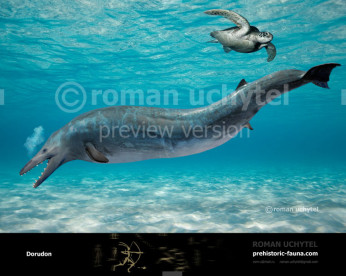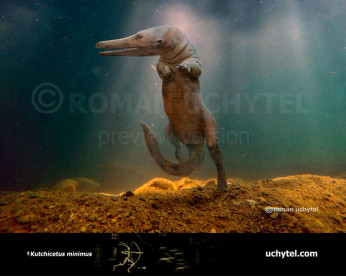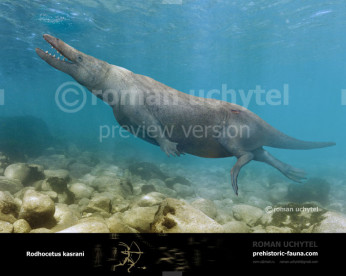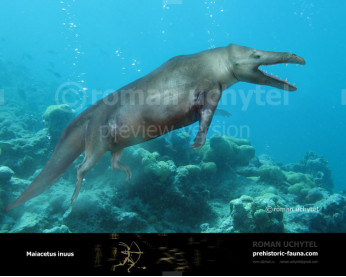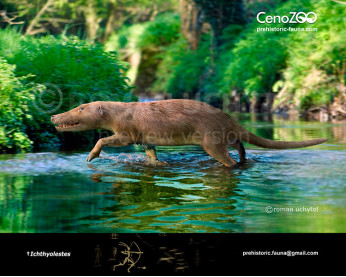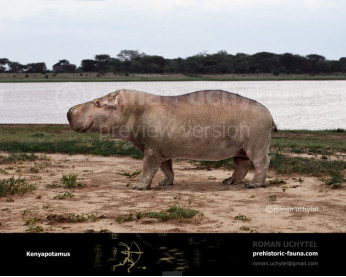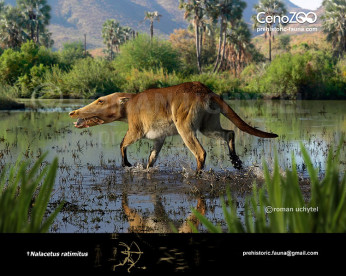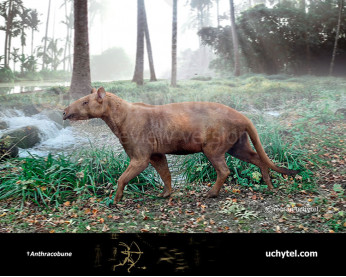Ambulocetus natans
118118Ambulocetus (Ambulocetus Thewissen et al., 1996)
Order: Cetacea
Suborder: Archaeoceti
Family: Ambulocetidae
Subfamily: Ambulocetinae
Temporal range: during the Early Eocene of Pakistan (50 – 48 million years ago)
Dimensions: length - 2,7 m, weight - 230 kg
A typical representative: Ambulocetus natans Thewissen et al., 1996
Ambulotsetus - genus of extinct cetaceans. One species is known - Ambulocetus natans. He lived in the Eocene, in present-day Pakistan. Its length was about 3 m and weighed about 300 kg. Externally they resembled remotely a cross between a crocodile and a dolphin, with a powerful tail and webbed feet adapted for movement in the water. Probably, like modern crocodiles, they had waiting for a prey at the bottom of the lake, jumped on it and dragged into the water. In the water moved by means of movements back and tail in vertical direction. On the land Ambulotsetus lumbered and never left far from the water. At night this animal was on the shore, near the water.
Ambulocetus, with Pakicetus, belonged to Archaeocetes, (the ancient whales) - a group of animals of the order of cetaceans, from which later have occurred modern whales.
Ambulocetus (Ambulocetus Thewissen et al., 1996)
Order: Cetacea
Suborder: Archaeoceti
Family: Ambulocetidae
Subfamily: Ambulocetinae
Temporal range: during the Early Eocene of Pakistan (50 – 48 million years ago)
Dimensions: length - 2,7 m, weight - 230 kg
A typical representative: Ambulocetus natans Thewissen et al., 1996
Ambulotsetus - genus of extinct cetaceans. One species is known - Ambulocetus natans. He lived in the Eocene, in present-day Pakistan. Its length was about 3 m and weighed about 300 kg. Externally they resembled remotely a cross between a crocodile and a dolphin, with a powerful tail and webbed feet adapted for movement in the water. Probably, like modern crocodiles, they had waiting for a prey at the bottom of the lake, jumped on it and dragged into the water. In the water moved by means of movements back and tail in vertical direction. On the land Ambulotsetus lumbered and never left far from the water. At night this animal was on the shore, near the water.
Ambulocetus, with Pakicetus, belonged to Archaeocetes, (the ancient whales) - a group of animals of the order of cetaceans, from which later have occurred modern whales.

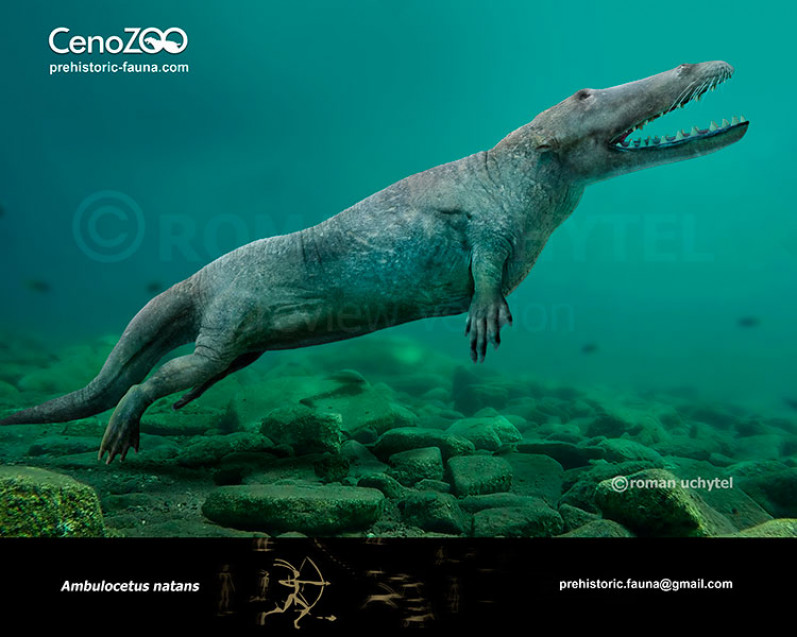
-797x638.jpg)
1-797x638.jpg)
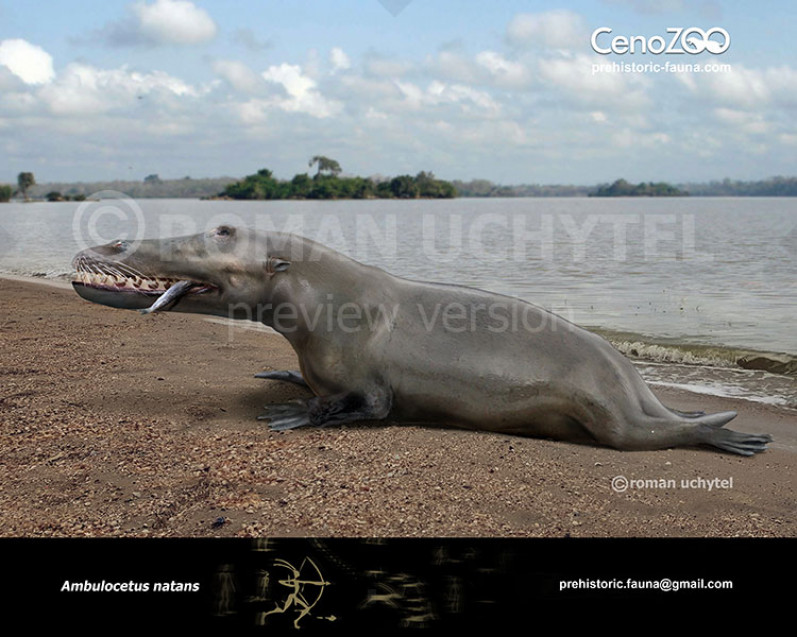

-70x56.jpg)
1-70x56.jpg)

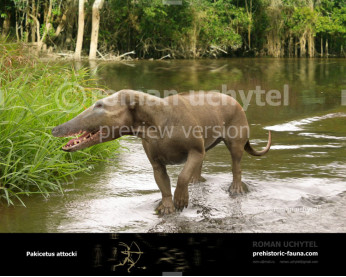
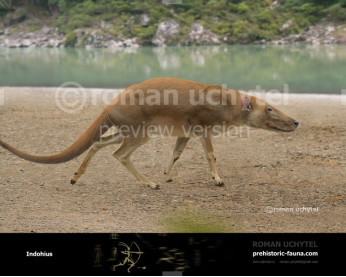
-346x277.jpg)
